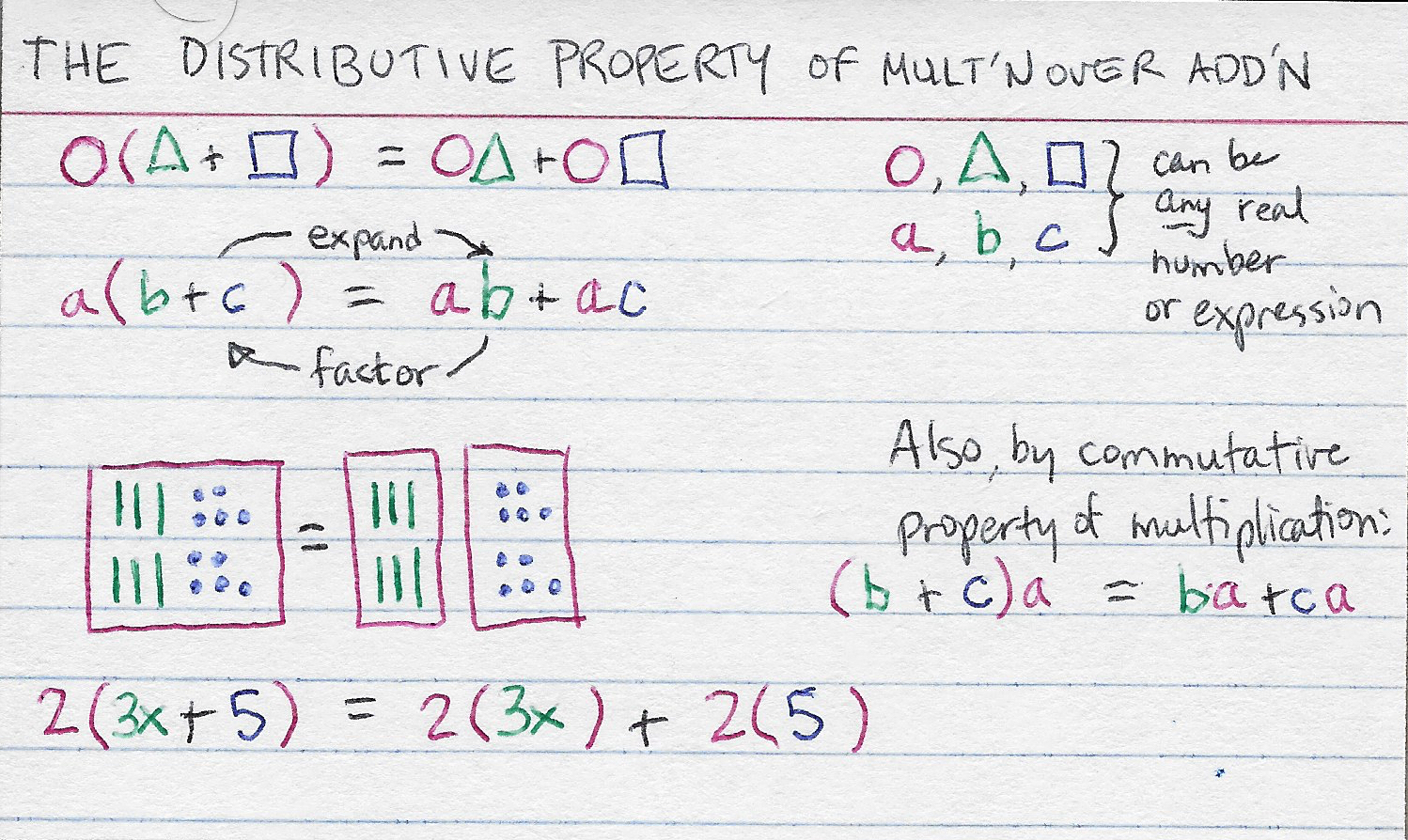The distributive property of multiplication over addition
Now, that is a mouthful for a pretty common-sense idea. The image below is my summary of it, and an example of using a flash card to learn math concepts.

It’s often called “the Distributive Property” for short, but it’s good to remember the “multiplication over addition” part, because both operations are involved.
Let’s start in the middle, with the boxes of lines and dots*. Each line represents one of an unknown quantity, which we’ll call x. Each dot represents one unit, i.e. 1.
One thing about making flash cards that you should expect: you’ll want to edit them repeatedly, sometimes because you know the content better and can leave out more details, and sometimes because you think of a better way to represent the material. This card is an example of the latter. I wish I had drawn thin horizontal lines across the middle of each box, to better represent the two sets in each box.
The lines and dots diagram is translated with the algebra equation below it. I like to read the diagram this way:
Two sets of 3 x’es and 5 ones
is the same as
two sets of 3 x’es and two sets of 5 ones.
The diagram makes it perfectly clear why this is true. Both sides of the diagram equation have the same lines and dots; they’re just grouped differently.
The two algebra versions, with a, b, c and with 2, 3x, and 5 are the same pattern. On the left-hand side of each, there’s a red counter on the outside, and then a green quantity and a blue quantity added together inside the parentheses.
Do you see how the version on the top, with the circle, triangle, and square is exactly the same pattern? I like to write it that way sometimes to emphasize that each shape can stand for any real expression. Then when you come to something like the LHS (left-hand side) below, you just calmly write the RHS:
$$ \color{red}{e^x} \color{black}( \color{green}{x^2} \color{black}+ \color{blue}3 \color{black})= \color{red}{e^x} \color{black}( \color{green}{x^2} \color{black}) + \color{red}{e^x} \color{black}( \color{blue}3 \color{black}) $$
A couple final notes:
- Notice how I labeled the a, b, c equation with expand and factor to indicate the process we use for getting from one side of the equation to the other. It’s vital to learn all the vocabulary in a math class, just as you would in a regular foreign language class.
- The paragraph at the bottom right of the card applies the Commutative Property of Multiplication to write the Distributive Property in its other form with the (red) counter on the right side of the expressions. Remember, the Commutative Property just says that
a times b = b times a.
- Always try to relate the name of a property or operation to what it names.
- What does distribute mean? Think of distributing papers in a classroom. In the Distributive Property, the counter on the outside is being distributed to the things being added on the inside.
- What does commute mean? You change places when you commute back and forth to work. The factors can change places when you multiply.
- What does distribute mean? Think of distributing papers in a classroom. In the Distributive Property, the counter on the outside is being distributed to the things being added on the inside.
* If you have used Algebra Tiles before, you may have learned to draw your arrangements with lines and dots like this, and squares to stand for x2.
